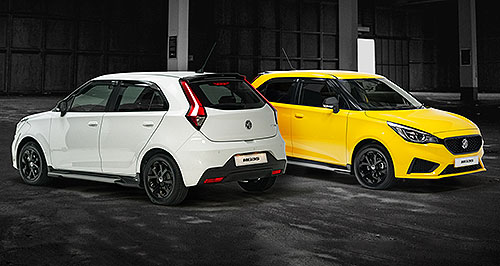News - Market Insight - Market Insight 2021Market Insight: The Chinese waveHard act: Since 2009, eight Chinese brands have visited the market but only four remain. How Chinese vehicle OEMs have performed in Australia since Great Wall’s 2009 debut28 Jun 2021 By NEIL DOWLING SELLING a car in Australia requires jumping over hurdles unique to the market and with complexities of regulations only exceeded in difficulty by the voracious competitiveness of its 65 brands.
Add to that the relatively small buyer population and enormous distances to be combated in distribution and Australia could be seen as a market simply too hard for new players.
But they still come. There are a lot of reasons to sell in Australia, not the least being it is regarded globally as a mature market that has a harsh environment for a vehicle.
Prove a car in Australia with durability and reliability and it seems it will pretty much stand up to conditions in most other countries. Factor in first-world demands for technology, comfort and style and Australia just could have it all.
But tough? Just ask China. The world’s biggest car market has launched ships bound for Australia laden with new cars for years, opening in earnest with the Great Wall utes in 2009, the brand becoming the first official Chinese brand on the Australian market.
Under Ateco Automotive, it thrived on its low price and mechanical simplicity with upgrades and improved engine choices following until Great Wall Motors pulled away from the independent distributor and established a factory-owned Australian office in 2016.
Great Wall endured a few hiccups on the way, including warranty and parts supply issues, as well as the discovery of asbestos in some of the vehicle components that led to a recall of thousands of utes.
It has now merged with its sibling brand, Haval, which makes SUVs. Haval models were first imported into Australia in 2016.
Both are now under the GWM badge and recently the company forecast it would sell 18,000 units in Australia this year, a massive increase on the 5235 Great Wall-Haval products sold in 2020.
MG is the best-selling Chinese car-maker, opening in 2016 in Australia by its parent company SAIC after a failed attempt in 2013 by independent importer Longwell Motor.
In 2016, MG had two models priced from $13,990 (plus on-road costs) and from 600 sales in its first full year of 2017, it last year sold 15,253 cars.
More importantly, the sales of 2020 have almost been exceeded in the first five months of 2021, with MG recording 15,241 sales to the end of May.
It may be a trend. GWM recorded 5235 sales for the whole of 2020 yet sold 5489 units in the five months to the end of May this year.
The fourth brand in the market is LDV, also a division of SAIC but with distribution through Atco Automotive rather than the MG route of establishing a factory presence.
Unlike most Chinese car-makers, LDV opened with the V80 van rather than a ute, and has subsequently added utes and expanded to SUVs.
It started in 2014 with 214 sales and the single model V80 van and now has seven distinct models and variants including three vans, two buses and a single ute and SUV.
LDV’s growth each year has been in the double digits, mirroring the expansion of its Chinese rivals.
China will add another home-grown product with the sale to the public of BYD electric cars from November (delivery early 2022) using an online buying process. BYD already has a presence in Australia with a limited number of its EVs used as taxis in New South Wales.
Behind the winners are five Chinese brands that didn’t make it. The most successful was Foton, which launched its ute with a Cummins diesel engine and Dana axle components in 2014 and sold until 2017. It was then in the hands of other importers with some sales through to 2018.
Geely sold its MK sedan and hatch range in Western Australia through entrepreneurial car dealer and one of the key players in Hyundai’s fledgling steps into Australia, John Hughes.
The MK was only available as a manual, limiting its potential, and only in WA as the nation moved to new design rules that included electronic stability control – a technology not available on the MK.
The car sold from 2009 to 2013 and though Geely planned a second assault, it deferred and instead bought Volvo, started Polestar, bought Proton and acquired a large slice of Lotus.
In addition, Chery passenger cars were imported by Ateco from 2011 until 2014 and were, like Great Wall, subject to asbestos-related recalls. ZX Auto also put its Grand Tiger ute on the market through distributor John Hughes in 2015 before ending in 2018.  Read more21st of June 2021  Market Insight: Seven years of success for Kia warrantyKia expecting record sales in the seventh year of its seven-year aftercare package14th of June 2021  Not much speed in today’s sportscar marketBuyer interest in sportscars slides as SUVs, utes, become the new fashion accessory10th of June 2021  First drive: Updated Kia Cerato arrives from $25,990 d/aNew face and corporate logo headline MY22 Kia Cerato updates as manual gets axed7th of June 2021  Market Insight: Lots of fish, not enough chipsAussie new-car market booms but semiconductor shortage slows its potential |
Click to shareMarket Insight articlesResearch Market Insight Motor industry news |


















Facebook Twitter Instagram